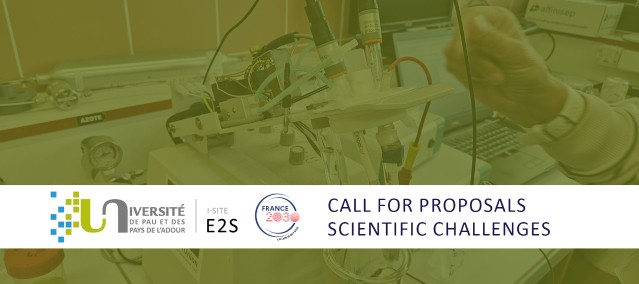Two new research projects in the field of the environment

The Solutions for Energy and the Environment “Scientific Challenges” call for projects invites University of Pau and Pays de l'Adour researchers to propose innovative research projects exploring new themes or tackling scientific, societal, and technological challenges. Two faculty members were selected as laureates in 2025.
DEBone: Using Dynamic Energy Budget to Calibrate Fish Bones and Other Calcified Structures as Environmental Sensors
Led by Charlotte Récapet – Écobiop research lab (UPPA-INRAE)
UPPA interdisciplinary social mission: Adapt coastal, forest and mountain ecosystems to make them more resilient
Fish could be real “living sensors” of climate change. The growth and chemical composition of their calcified parts, such as bones or otoliths (small structures in the inner ear), are influenced by the environmental disturbances they have encountered. They are therefore valuable sensors of environmental disturbances in aquatic environments, particularly for species that inhabit both freshwater and marine environments, and in places where technical sensors are difficult to install.
However, deciphering these natural “archives” is not easy, as they are the result of both the external environment and the fish's internal metabolism. The project therefore aims to develop a scientific model capable of distinguishing between these two processes in order to make interpretation more reliable.
To achieve this goal, the project will develop a theoretical model of the composition of calcified parts based on the theory of metabolic Dynamic Energy Budget, calibrate it using experiments, and exploit field sampling opportunities to validate this approach.
MIRAGE: Mechanistic Insights and Reactive Intermediates in the Gas-Phase Transformations of Hemiterpene Derivatives
Led by Karinne Miqueu – IPREM research lab (UPPA-CNRS)
UPPA interdisciplinary social mission: Adapt coastal, forest and mountain ecosystems to make them more resilient
The stability of our planet depends in particular on atmospheric aerosols, tiny particles that influence the climate and air quality. Among them are secondary organic aerosols (SOAs), formed by the oxidation of volatile organic compounds (VOCs). To understand the formation of SOAs, detailed knowledge of the transformation of organic precursors and the reaction mechanisms involved is necessary, which involves the difficult task of identifying intermediate molecules.
To do this, the project will study the gas-phase reactions of biogenic VOCs, particularly hemiterpenes, and their oxidation products when they interact with UV light or pollutants such as ozone. It will combine controlled experiments with state-of-the-art spectroscopic techniques capable of detecting and identifying these molecules, which have a very short lifespan.
These advances will improve predictions of atmospheric chemistry, with direct benefits for understanding climate and improving air quality. The methodology developed can also be applied to other atmospheric systems to shed more light on the chemical mechanisms at work in the environment.
The Energy and Environment Solutions (E2S) I-SITE is a research consortium bringing together UPPA, INRAE, Inria, and CNRS, which has obtained funding from the Investments for the Future French Program thanks to the “Sciences, Innovation, Territories, Economy Initiative” (I-SITE) label of academic excellence.
